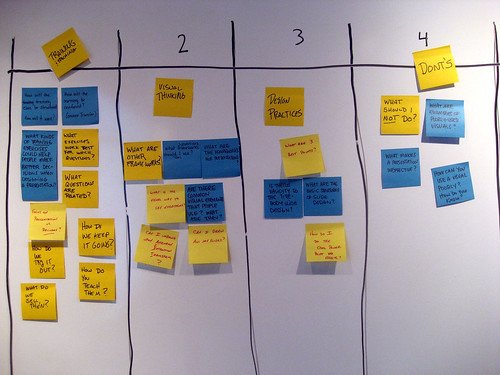Affinity map your way to a manuscript
by Angela Stockman
Angela is facilitating Education Expeditions beginning November 8, 2021 and April 4, 2022
Click here for more info
In a previous life, I was an English teacher. Now, I facilitate learning for other English teachers, do a whole bunch of action research, and write books about the stuff I’m learning.
I’m learning that Gamestorming is a powerful way to produce a manuscript. I Affinity Map my way through my own drafting processes, and in recent years, I’ve learned that when young writers play this way, the synthesis of their ideas is often far more sophisticated.
Affinity mapping exposes themes, topics and subtopics
Try this yourself, or invite your students to: Gather your sources and then, dip into them with a healthy stack of sticky notes in hand. Document your facts--one per note. Do this across sources, and don’t stop to create coherent lines of thinking just yet. Once you’re done researching, spill all of your notes onto an open space. Cluster those that hang together well. Categorize them. Decide if you’re going to do further research when you encounter a single note that seems to have no home.
Those categories can become topics, sub-topics, or even chapters in a book.
As a teacher, I encountered many students who froze in the face of research and information writing. They’ve been taught to outline too soon. They’ve been encouraged to rush the process and reach coherence far before they’re ready. Affinity Mapping helps them Gamestorm the work in ways that protect and elevate complexity while sustaining their energy. Divergent thinking matters. This is one way to make space for that in K-12 classrooms.
Angela is facilitating Education Expeditions beginning November 8, 2021 and April 4, 2022



